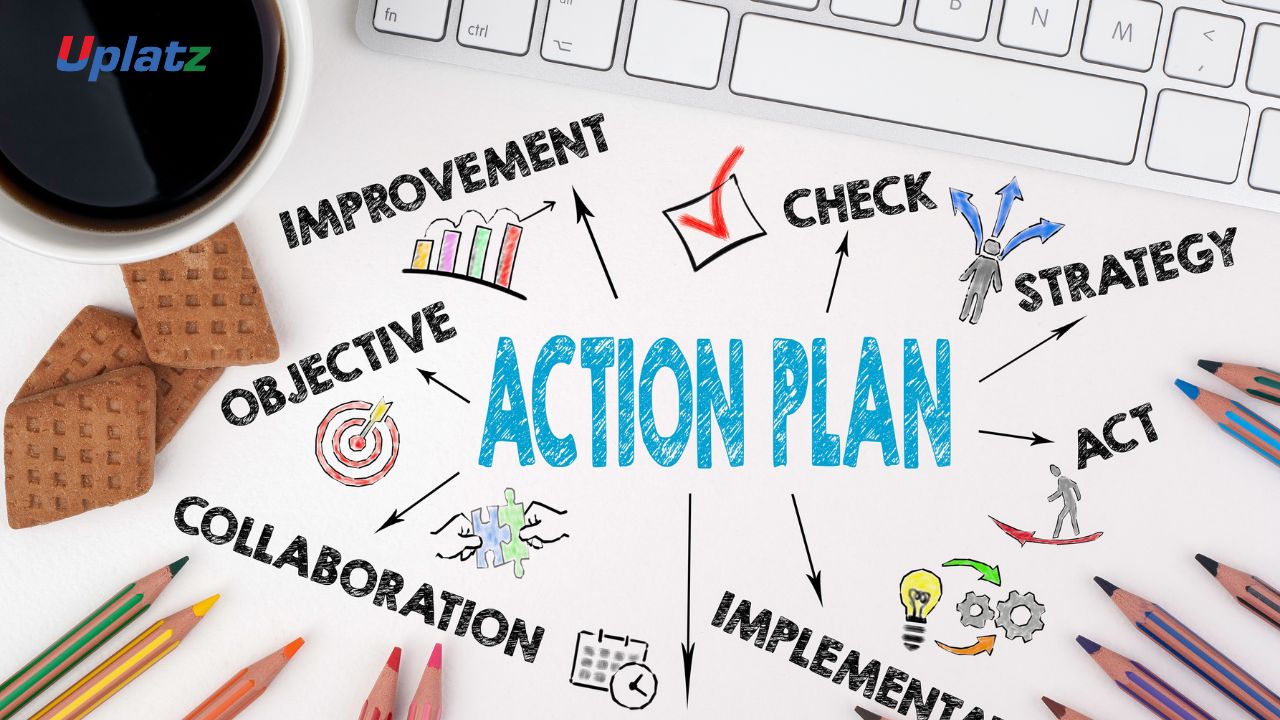Summary
In an era defined by rapid change and digital disruption, having the right strategy is no longer sufficient—execution is everything. This blog explores the growing strategy execution gap, a critical challenge for organizations worldwide. It explains how businesses can bridge this gap by transforming insights into measurable outcomes using the right tools, culture, leadership, and governance. Drawing on expert perspectives and real-world examples, we uncover how companies can evolve from planning to actual performance and impact.

career-accelerator- head of Human Resource By Uplatz
Introduction
Today’s businesses generate unprecedented levels of insight—from customer analytics to operational intelligence, market shifts, and competitor behavior. Yet many organizations face a persistent challenge: the strategy execution gap—the disconnect between strategic planning and actual delivery.
This blog examines why this gap exists, the consequences it poses, and most importantly, how to overcome it. We’ll delve into the cultural, technological, and leadership changes required to ensure that smart strategies are effectively executed in today’s fast-paced and complex business landscape.
Understanding the Strategy Execution Gap
The strategy execution gap refers to the failure to effectively implement organizational strategies despite having clearly defined goals. According to a 2023 Harvard Business Review study, over 60% of strategies fail due to poor execution, not bad planning.
Common causes of this gap include:
-
Misalignment between leadership and operational teams
-
Inadequate communication of strategic priorities
-
Poor cross-functional collaboration
-
Lack of performance tracking and accountability
-
Slow decision-making in fast-changing environments
The result? Wasted resources, missed market opportunities, and eroded stakeholder trust.
From Insight to Impact: What’s Needed?
To bridge the strategy execution gap, organizations must translate strategic insights into operational momentum. Key enablers include:
1. Real-Time Intelligence Platforms
Tools like predictive analytics, AI dashboards, and decision intelligence platforms transform static insights into real-time action. Businesses that use dynamic reporting, like McKinsey recommends for agile companies, are more responsive to market changes.
2. Strategy Execution Frameworks
Adopting structured execution frameworks ensures that vision and action are closely aligned:
-
OKRs (Objectives & Key Results): Align teams and track progress
-
Agile Execution: Enhance flexibility and responsiveness
-
Balanced Scorecards: Connect strategic goals to metrics across functions
These methodologies help reduce ambiguity and improve coordination.
3. Culture of Execution
An execution-focused culture ensures accountability and empowerment:
-
Encourage initiative and ownership at all levels
-
Break down silos between departments
-
Recognize execution milestones
-
Provide training for agile thinking
Execution should be a shared responsibility—not confined to project teams.
Key Technologies That Bridge the Strategy Execution Gap
Digital tools are playing a pivotal role in overcoming the strategy–execution disconnect.
Digital Transformation Platforms
-
Cloud tools (e.g., Google Workspace, Microsoft 365) improve collaboration
-
Workflow automation accelerates decisions
-
AI and ML prioritize resources based on predictions
Strategy-to-Execution Platforms
Platforms like Cascade, Perdoo, Asana, and WorkBoard help organizations plan, execute, and monitor strategy from a unified interface. According to Gartner, these tools reduce misalignment and increase agility.
Data-to-Decision Pipelines
Industry leaders like Amazon and Tesla use live feedback loops to dynamically refine strategy execution based on real-world data, enabling more responsive operations.
The Role of Leadership in Strategy Execution
Leadership plays a crucial role in closing the strategy execution gap. Successful leaders:
-
Define and consistently communicate a clear vision
-
Empower cross-functional teams
-
Build execution capabilities across departments
-
Establish governance systems with transparency and feedback
Strong leadership aligns teams and minimizes resistance to change.
Case Studies: Strategy Execution in Action
Amazon Web Services (AWS)
AWS’s success stems from its “two-pizza team” structure, where small, autonomous teams own specific goals. With real-time performance metrics and alignment to Amazon’s broader strategic principles, AWS drives consistent and agile execution.
Unilever
Unilever’s digital transformation was powered by agile frameworks, localized execution, and global KPIs. Through platforms like Microsoft Power BI and employee empowerment initiatives, they successfully closed the strategy execution gap.
Challenges in Bridging the Gap
Despite best efforts, many organizations still struggle with:
-
Resistance to change and status quo bias
-
Overcomplex strategic planning with unclear execution paths
-
Execution ownership vacuum—no single person or team is accountable
-
Information overload with no prioritization
-
Misaligned KPIs between strategy and operations
Tackling these requires both structural change and cultural reinforcement.
The Future of Strategy Execution
By 2030, bridging the strategy execution gap will rely on:
-
AI-Augmented Strategy: Automated simulations and predictive planning
-
Real-Time Execution Models: Continuous adjustment based on new data
-
Democratized Strategy Ownership: Teams at every level will co-own strategic delivery
Organizations that excel in aligning insight, execution, and accountability will lead the next wave of innovation and resilience.
Conclusion
Bridging the strategy execution gap is no longer a “nice to have”—it is essential to surviving and thriving in today’s complex markets. Companies that succeed will move beyond static planning cycles and adopt dynamic execution models fueled by technology, culture, and empowered leadership. The time to act is now. From insight to action, the future belongs to those who can truly execute.
References
- kBoard Inc. (2023). Bridging the Strategy–Execution Gap with OKRs.
- World E
- HBR (2023). Why Strategy Execution Unravels and What to Do About It. Harvard Business Review.
- McKinsey & Co. (2022). Agile Transformation and Strategy Execution.
- Worconomic Forum (2023). Leadership in the Fourth Industrial Revolution.
- BCG (2022). Unlocking the Execution Engine.
- Gartner (2023). Strategy Execution Management Tools Market Guide.
- Kotter, J.P. (1996). Leading Change. Harvard Business School Press.
- Lafley, A.G., Martin, R.L. (2013). Playing to Win: How Strategy Works. Harvard Business Review Press.
